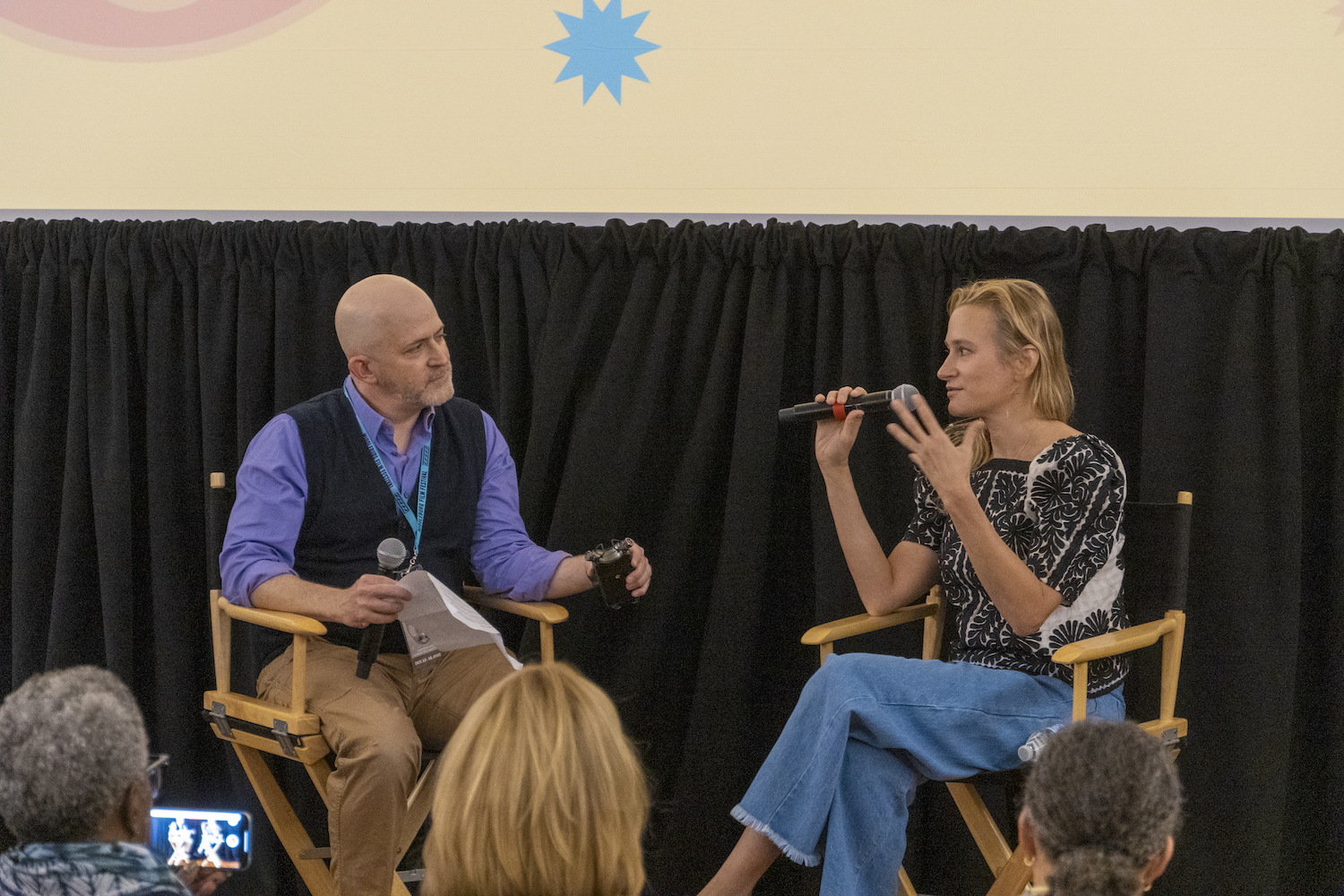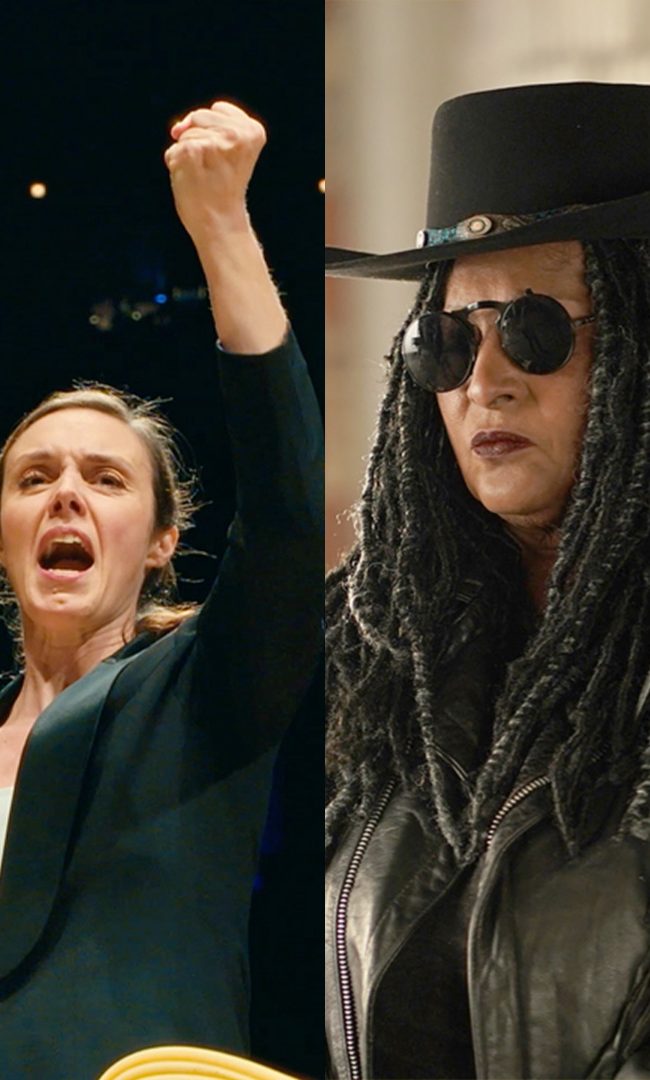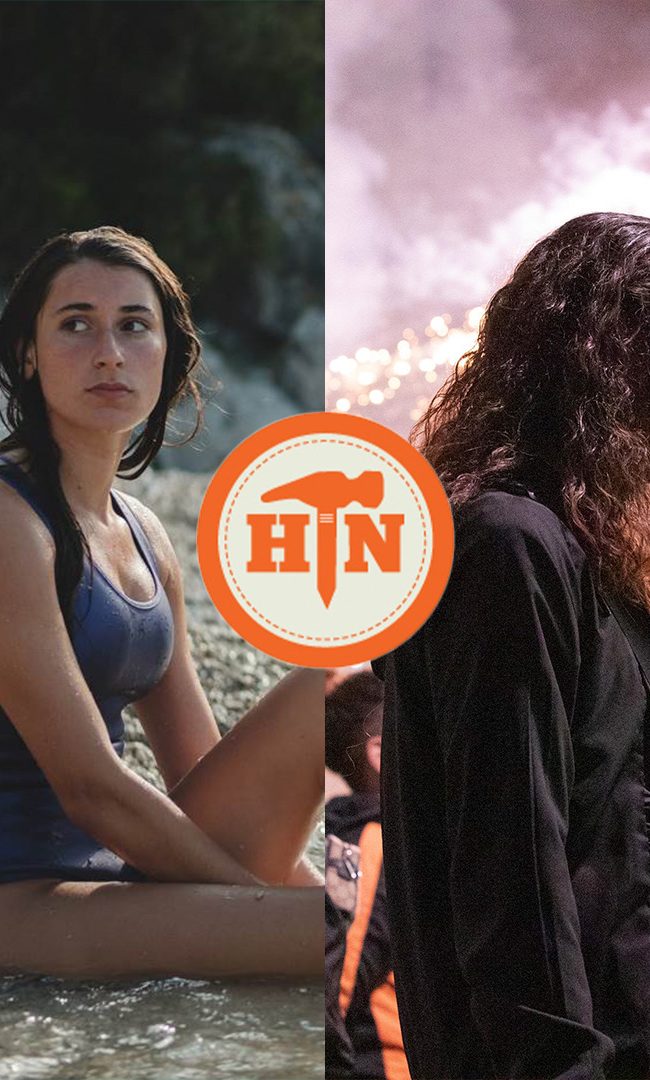A Conversation with Margaret Brown (DESCENDANT)

In 1860, 52 years after the U.S. banned the international trafficking of enslaved Africans to our shores, one Timothy Meaher, an Alabama businessman, thought it would be a lark to circumvent the law and show what he could get away with. The deed done, he burned the ship, the Clotilda. In her new documentary, Descendant (which I also reviewed), director Margaret Brown (The Order of Myths) brings this saga, both dispiriting and uplifting, to the screen. Following the lives, past and present, of the descendants of those Africans brought to the United States as slaves, the movie examines our nation’s long history of white supremacy and discrimination. Brown chronicles the search for the Clotilda’s remains, along with how redlining and zoning issues have continued to make the lives of the descendants (many of whom still live in a community called Africatown) more difficult and dangerous than they should be. At the recent Middleburg Film Festival, I had the privilege of moderating the film’s post-screening Q&A, and here is a transcription of that conversation, edited for length and clarity.
Hammer to Nail: You are from Mobile, Alabama, and that’s not only where Descendant is set, but also where the 2008 The Order of Myths, which has a connection to this film, takes place. I was wondering if you could tell us what that film was about and how it connects to Descendant.
Margaret Brown: Sure. It was about segregated Mardi Gras in Mobile, where I grew up. My mother was the white Mardi Gras Queen in 1966. I wanted to make a narrative, but then when I started talking to people, there was this disconnect between what the camera saw and what they said, which is what you look for in a documentary where there’s something different, where there’s a dissonance. And so I started making that movie.
And the Queen that year was Helen Meaher, of the Meaher family in this film. And when I was starting to make the movie, my mother said to me, or at least this is how I remember it, “You know that family, the Meaher family, they brought that ship over.” And I’d never heard the story. I didn’t know. Joycelyn [Davis], from Descendant, always points out in Q&As that they teach it in, I believe, the fourth grade, where there’s like a page on it in the Alabama history book. But since it’s about her family, she would remember that. But just a page in the year of Alabama history? I don’t.
So that was sort of my introduction to the story of the Clotilda and the Meaher family. But then we filmed throughout Mardi Gras and then, after Mardi Gras, we were filming with Stephanie Lucas, the Black Mardi Gras Queen, and her grandparents. And her grandfather, Barry Malone said, “Oh, my people were descended from her people’s ship,” meaning Helen Meaher. So he was connected, and Stephanie was connected, to Helen through the Clotilda. And I looked at the cinematographer and he looked at me and we were just like…the whole movie just reconfigured in that moment.
HtN: Wow.
MB: Yeah. And so that was the beginning, really, of the way that movie was shaped. We went to Sundance and to all these international festivals. It showed in theaters, and Helen Meaher traveled with the movie. She was part of the film. She talked about being from the Meaher family. But when this new film came around, as you can see, no one in that family spoke to us.
HtN: So you write in the press notes for this film that, “For me, this film feels like my life’s work till now. It is an opening to all that’s driven me creatively since I first picked up a camera and tried to tell a story.” How so? Can you unpack that?
MB: Well, I’m from the South and I have sort of a tortuous relationship with being from the South. I love where I’m from, but I just always found the way it was deeply problematic. And all my films have been about the South. And they’ve been building on themes, and particularly this one is a sort of spiritual sequel to The Order of Myths, even though it’s a very different film. That film is pretty strict vérité, with some interviews.
But this film has the Zora Neale Hurston aspect of it that really drove me. I read her book Barracoon and I read her letters. I don’t know if anyone’s read her letters. They’re in a book about this thick. (holds up her fingers to demonstrate) It’s incredible. And I just got really obsessed with her. So I knew early on that I wanted her words and her spirit to be the backbone of the movie just as much as the ship was.
HtN: Until recently, I was unaware of Zora Neale Hurston’s work as an anthropologist and documentarian. I found out a few years ago. And it’s really quite remarkable, her body of work outside of literature. And that’s her voice we hear singing at the end of your movie, right?
MB: Yes. And her cinematography is incredible. When we saw it, we were like, “Are you kidding me?”
HtN: You have a really remarkable ensemble of great people in the movie. I know you worked with folklorist Dr. Kern Jackson before on The Order of Myths. How did you go about assembling the rest of your onscreen protagonists?
MB: Well, I don’t know how many documentary filmmakers are in this room, but you cast for documentaries just like you cast for narrative films. I only sort of realized this really recently, but this is a community that’s been passing down the story of their family for 160 years. So of course they’re amazing storytellers. This sounds like a sports analogy, but for this film, the bench was deep. There were so many great storytellers in this community. And I mean, I’m super biased, but I feel like the South is full of great storytellers. Southerners just know how to tell a story. My dad’s a songwriter, so I grew up in that tradition of the porch and the stories and who can tell the best story. And I just felt like, when I walked into this community 15 years ago, that you could feel it. Just great storytellers.
So I met Emmett [Lewis] really early on, and then I met Joycelyn and then I met Veda [Tunstall] with her mom. I immediately knew that Emmett was a star. Everything that came out of his mouth was profound. And I was just like, “Who is this person? He’s so connected to who he is.” And then for Veda and Joycelyn, I felt very connected to them as women. When you make a movie that takes four and a half years like this one did, a lot of times you’re just having more coffees and drinks and meals than you are actually shooting. And as a white person, I just didn’t feel totally equipped to make this on my own. When I realized a lot of white people weren’t going to speak to me, like they did in The Order of Myths, I was like, “Whoa, how am I going to do this? I have blind spots.”

Dr. Kern Jackson in DESCENDANT
This would not be as strong of a film without there being people who were there for me who were in the community and also producers. My producer, Essie Chambers, who was just a friend of mine when we started, was a very accomplished producer and writer and studio executive. We met at an art colony. But there were all these other people who helped me because I was just like, “This is not the story I set out to tell.” Welcome to documentary filmmaking! You’re just like, “I’m going to see what I find,” which is what’s amazing about documentary. But also, for me, this film was particularly challenging because I don’t know if I would’ve started it if I knew, “Oh, I’m a white woman telling this story that’s about this Black community.” So I kept going, but at the beginning I was like … I had the access, but those were always questions I was thinking about.
HtN: Speaking of the people behind the scenes, one of your executive producers is Questlove, who is actually a descendant of Charlie Lewis from the Clotilda. How did you connect with him?
MB: Well, early on we had people in common, but for someone like that, you’re only going to get one shot. So I waited until we were pretty close to being finished to show it to him. But he ended up being quite involved. Ray Angry, who’s one of our two composers, is in The Roots, too, and I got him through Questlove. And then he gave us notes, of course.
And then the production company, besides Netflix, that made the movie with me—Netflix acquired it later—is Participant Media. And I don’t know how many people know Participant Media, but one thing that’s great about working with them is that there’s always an impact campaign that happens. It’s the second part of the filmmaking. And so there’s a part two of the movie that’s yet to come. The impact campaign amplifies the work that’s already happening in the community, which is filled with activists. And Questlove’s company’s, Two One Five, is deeply involved in the impact.
HtN: So speaking of that impact campaign, what is going on with the Africatown Heritage House? According to your film, it’s supposed to open this fall.
MB: It got delayed. Welcome to the post-pandemic world of not being able to get wood and metal. And so it’s a little delayed, but I think the projected date now is December or January.
HtN: Going back to Zora Neale Hurston, her book Barracoon wasn’t published until 2018. It’s unclear to me watching the film if the people within that community knew of the book or if they discovered it for the first time in 2018 like the rest of us.
MB: They didn’t know about it before it was published, but they definitely knew that she’d been there and spoken to Cudjoe [their ancestor from the Clotilda].
HtN: I really like, in the film, how you have them read from the book. One of the big themes of the movie is how the injustices of the past continue to haunt the present and how the same people who did harm to communities of color continue to do so today. We live in an era where it often seems like certain segments of society want to turn the clock back to a not-so-distant time when we didn’t talk about the evils of slavery, redlining, zoning, et cetera. Beyond making a film like yours, do you have any thoughts on the best way to combat that willful amnesia?
MB: I think storytelling can be a revolutionary act. In any case, the film takes place in an activist community. When I decided to make this film, the first thing we started doing was attending meetings because there was a meeting every day, sometimes two a day. And it’s only 2,500 people who actively live in Africatown. But people come to Mobile. It’s a very proud community and people really care about the legacy of the community.
In terms of how to support something like this film, this is going to sound small, but to me it was huge: when the film plays on Netflix, we convinced them to let the credits play all the way through. You know how at the end of a Netflix film they start to show you all the next movies. Well, with this one, after it says “descendantfilm.com,” things start to populate the frame so people can see how they can get involved and amplify what’s already happening down there. So to me that was like … I mean, I want to make films that are art films, but you can make an artistic, beautiful film and also have it be an activist work.
HtN: Very true.
– Christopher Llewellyn Reed (@ChrisReedFilm)











